Among all the unique and exotic flowers in the world, few command attention like the Black Bat Flower (Tacca chantrieri). With its deep black, bat-shaped petals and long, trailing “whiskers,” this plant looks like something straight out of a fantasy novel.
Native to the tropical regions of Southeast Asia, the Black Bat Flower is admired for its rare coloration and otherworldly appearance. It’s a true showstopper in both indoor and outdoor gardens and a prized addition for collectors and exotic plant enthusiasts.
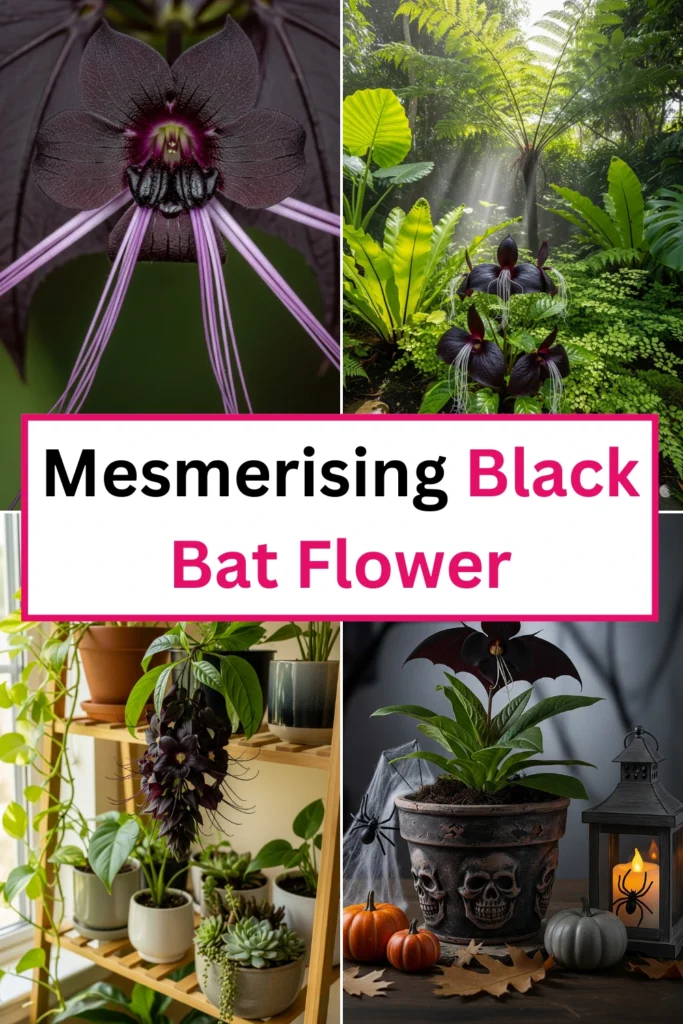
1. What Is the Black Bat Flower?
The Black Bat Flower is a rare tropical plant known for its dark, bat-like blooms that resemble a flying bat with extended whiskers. It’s part of the yam family but is cultivated primarily for ornamental purposes.
Its deep black (or sometimes dark purple) color is incredibly rare in the plant kingdom, making it a conversation starter in any garden or room.
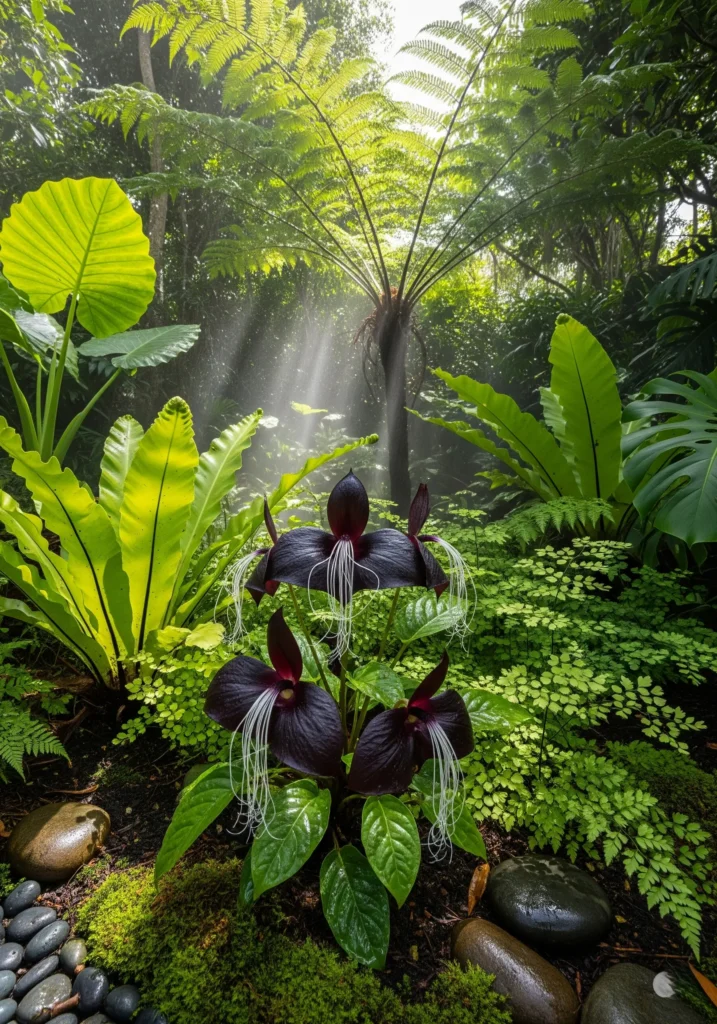
2. Scientific Classification
- Scientific Name: Tacca chantrieri
- Common Name: Black Bat Flower, Bat Lily
- Family: Dioscoreaceae (Yam Family)
- Origin: Southeast Asia (Thailand, Malaysia, Southern China)
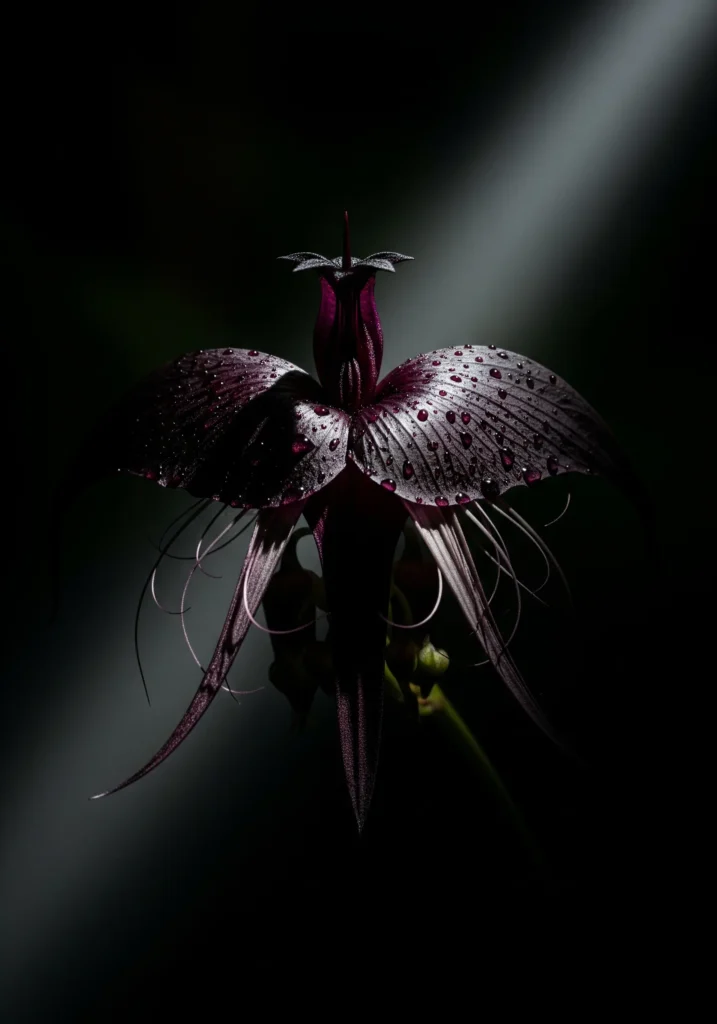
3. Origins and Natural Habitat
The Black Bat Flower thrives in the humid, shaded understory of tropical rainforests. It grows beneath the forest canopy, where it’s protected from direct sunlight and enjoys constant moisture and warmth.
In the wild, it can grow up to 3 feet tall and wide, producing massive leaves and striking flower clusters up to 12 inches across.
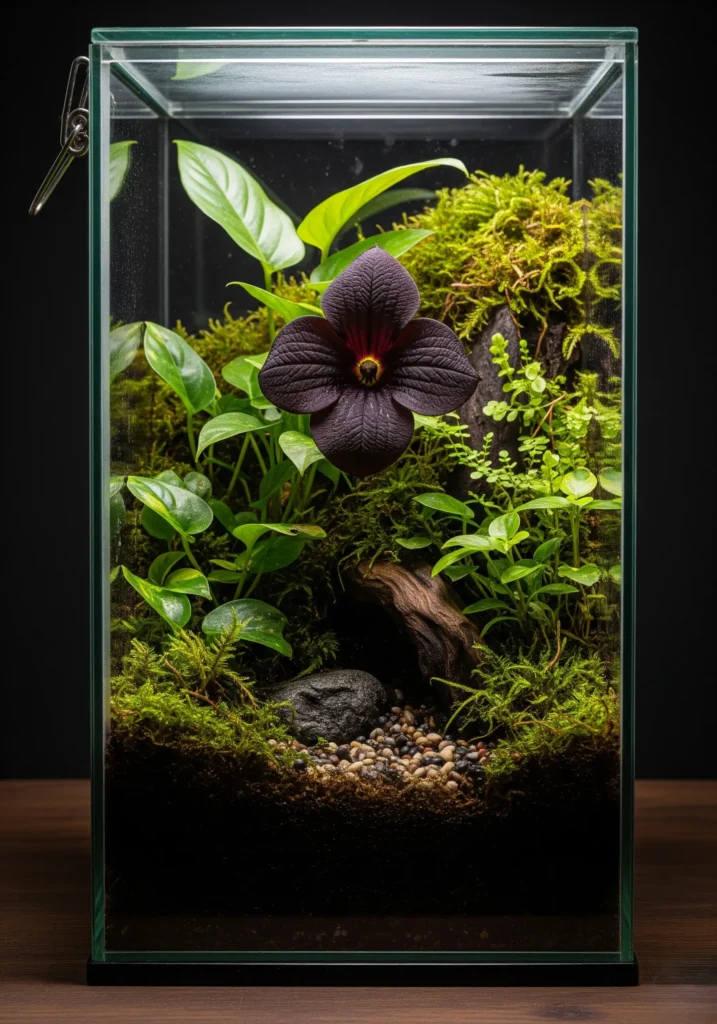
4. Unique Features and Appearance
- Color: Deep black or purple bracts with green or black central flowers
- Shape: The flower resembles a bat in flight with long trailing bracteoles (“whiskers”)
- Size: Flowers can reach 12 inches wide with whiskers up to 28 inches long
- Leaves: Large, glossy, and lance-shaped
- Bloom Time: Late spring to early fall (depending on conditions)
5. Symbolism and Cultural Significance
The Black Bat Flower often symbolizes:
- Mystery and Enchantment: Its dark color and strange shape evoke a sense of the unknown.
- Feminine Energy: Some associate it with lunar energy and feminine strength.
- Transformation: Like bats, it represents transformation and adaptability.
In Asian cultures, it’s considered a rare beauty and is often cultivated for its uniqueness and spiritual presence.
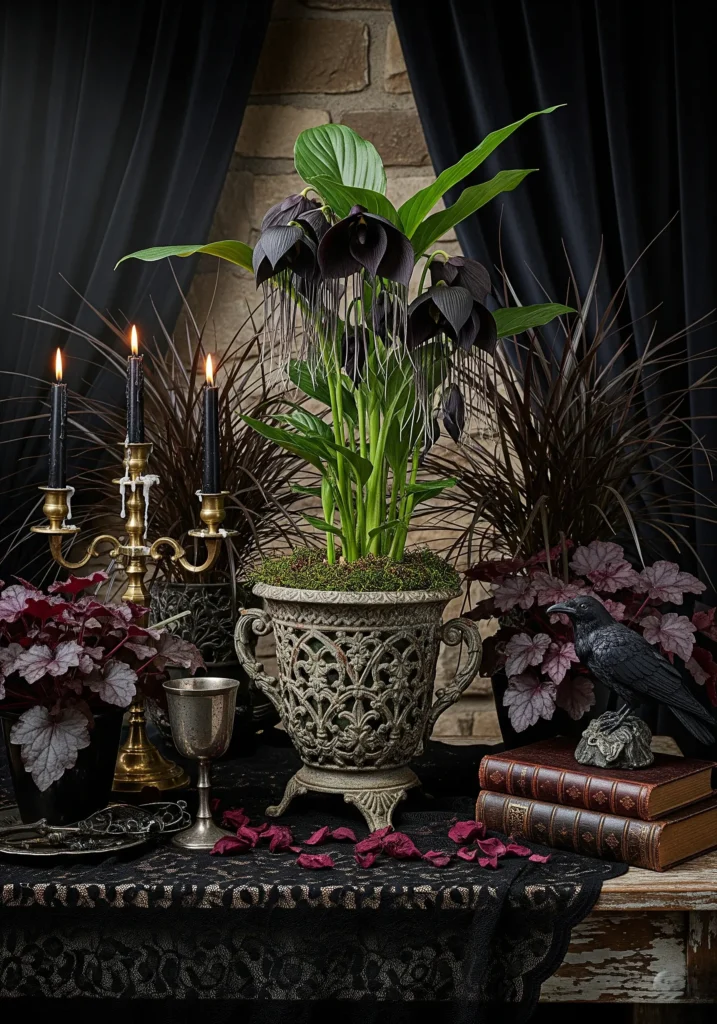
6. How to Grow a Black Bat Flower
Growing this plant successfully requires mimicking its natural rainforest environment: high humidity, indirect light, and rich, well-draining soil.
It can be grown indoors in containers or outdoors in tropical and subtropical climates.
7. Ideal Growing Conditions
| Requirement | Ideal Condition |
|---|---|
| Light | Bright, indirect light |
| Temperature | 70–85°F (21–29°C) |
| Humidity | 60–90% |
| Soil | Rich, well-draining, acidic (pH 6.0) |
| Watering | Keep consistently moist |
| Fertilizer | Monthly, balanced liquid fertilizer |
8. Potting and Soil Requirements
Use a well-draining, rich soil mix. A recommended blend includes:
- Orchid bark
- Peat moss or coco coir
- Perlite or pumice
The pot should have ample drainage holes to prevent root rot. Repot every 2–3 years to refresh the soil and allow root expansion.
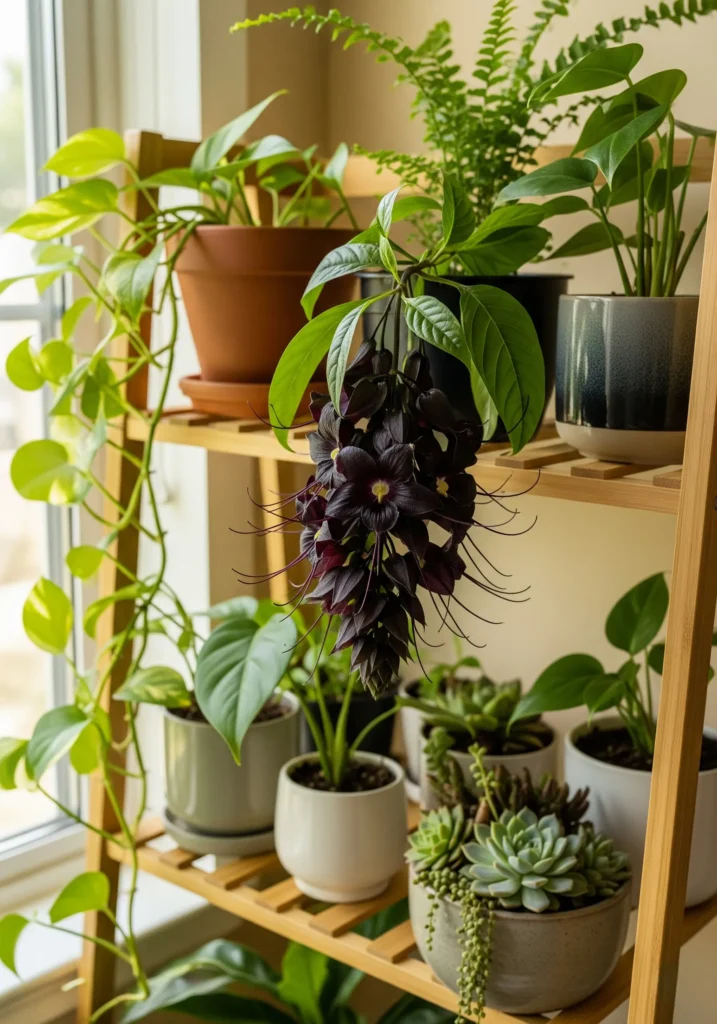
9. Watering and Humidity
- Watering: Keep the soil consistently moist but not soggy. Let the top 1 inch dry between waterings.
- Humidity: Mist daily or use a humidifier if indoor air is dry.
- Tip: Avoid letting water sit in the center of the plant, which can lead to crown rot.
10. Light and Temperature Needs
- Light: The Black Bat Flower prefers filtered sunlight or partial shade. Avoid harsh direct sun.
- Temperature: Keep in a warm spot. If temperatures drop below 60°F (15°C), bring the plant indoors.
11. Fertilization Tips
Feed your Black Bat Flower once a month during the growing season (spring through fall) with a balanced 10-10-10 or 20-20-20 liquid fertilizer.
Avoid fertilizing in winter, when the plant goes dormant.
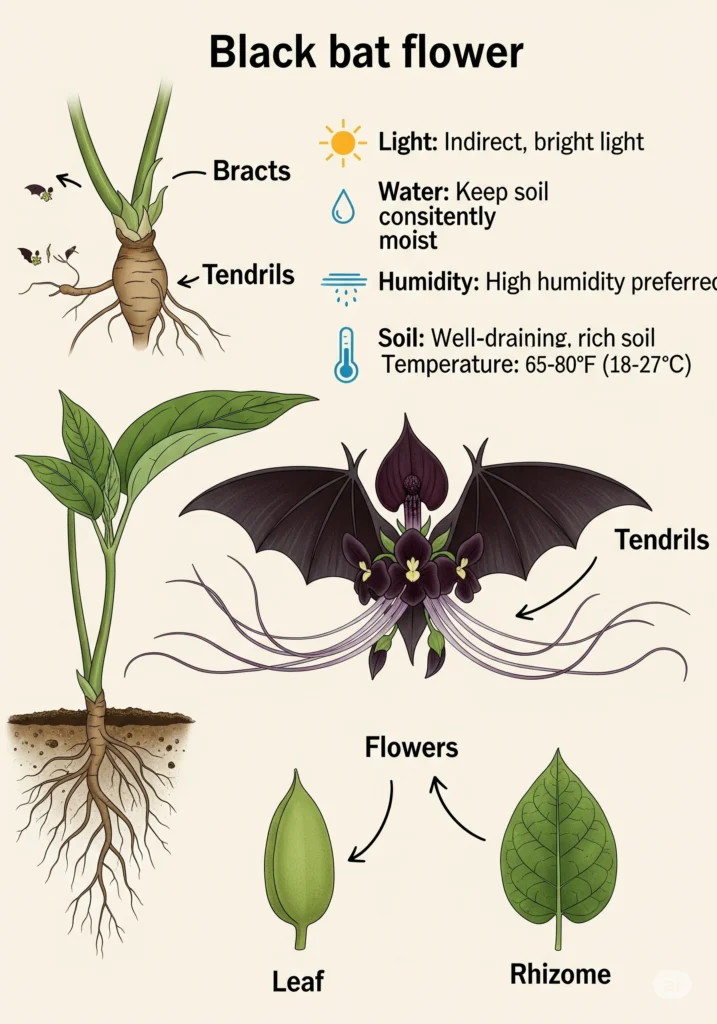
12. Common Pests and Diseases
Common Pests:
- Spider mites
- Mealybugs
- Aphids
Treat with insecticidal soap or neem oil as needed.
Diseases:
- Root rot (due to overwatering)
- Leaf spot (caused by fungal infections)
- Crown rot
Keep airflow strong and avoid excess moisture on leaves.
13. Propagation Methods
The Black Bat Flower is typically propagated through division of the rhizomes.
Steps:
- Wait until the plant is dormant in winter.
- Remove from the pot and divide rhizomes with clean shears.
- Replant in fresh soil and water lightly.
- New growth usually appears in spring.
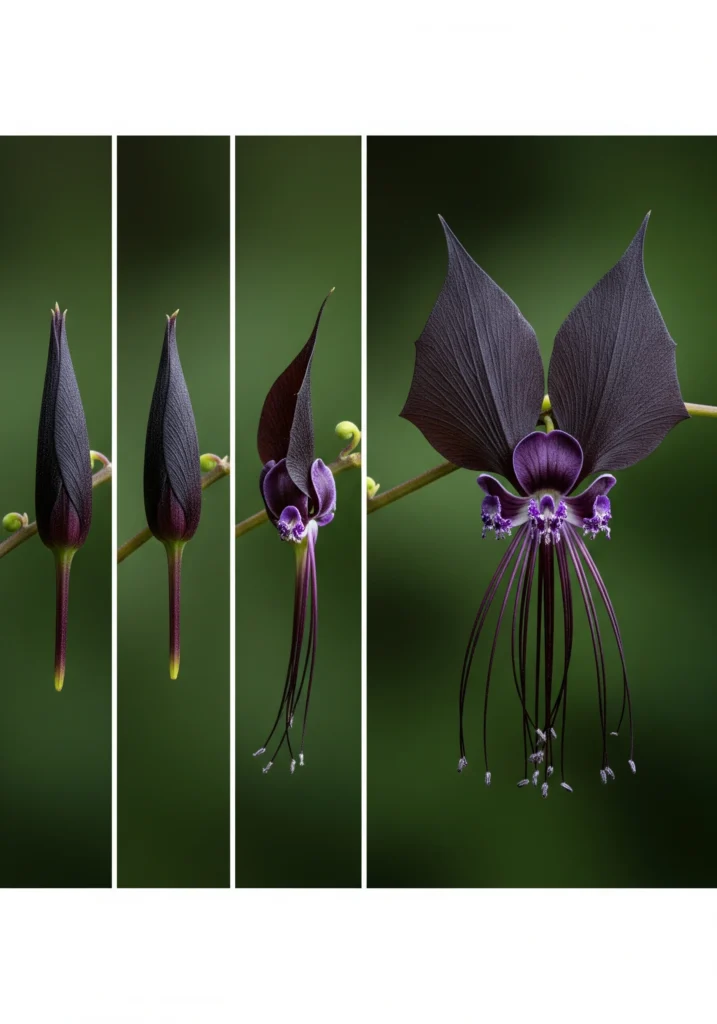
14. Indoor Growing Tips
- Use a humidity tray or room humidifier.
- Place near an east- or north-facing window.
- Rotate the plant monthly for even growth.
- Avoid cold drafts or sudden temperature changes.
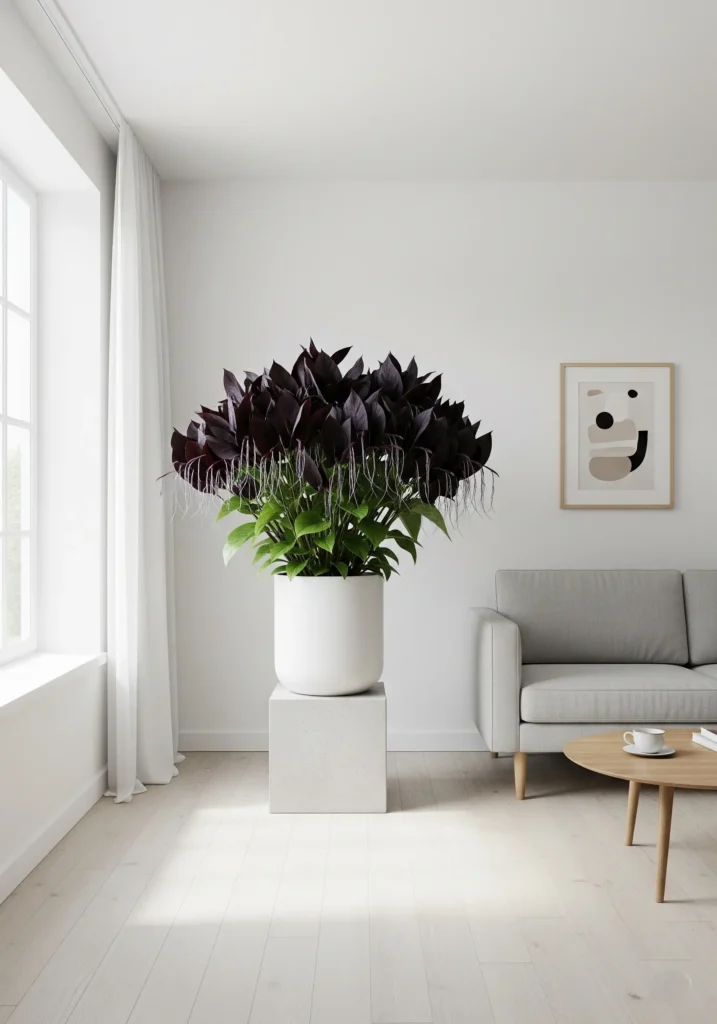
15. Outdoor Landscaping Ideas
In tropical climates (USDA Zones 10–12), you can plant Black Bat Flowers outdoors.
Design Tips:
- Use as a focal point in shaded tropical gardens
- Pair with ferns, hostas, and caladiums
- Surround with mulch to retain moisture
- Protect from strong winds
16. Styling the Black Bat Flower
This plant makes a bold decorative statement. Here are some creative ways to use it:
- Terrariums or display cases in humid indoor spaces
- Accent in a gothic or mystical garden theme
- Indoor focal plant in a minimalistic living room
- Halloween or fantasy-themed decor centerpiece
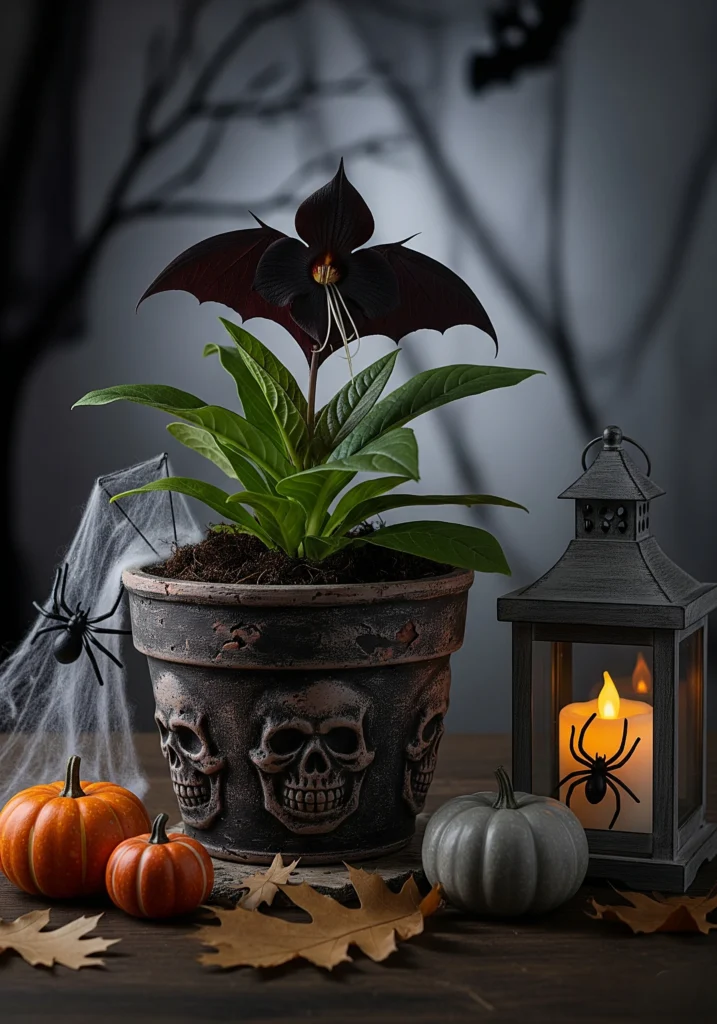
17. Is the Black Bat Flower Toxic?
The Black Bat Flower is not known to be toxic to humans or pets, but it’s still best to keep it out of reach of curious animals or small children, as ingestion may cause mild stomach upset.
18. Fun Facts and Trivia
- The plant can live for up to 5–7 years with proper care.
- Its long “whiskers” can grow up to 28 inches long.
- The dark color of the flower bracts absorbs light, helping to attract specific pollinators.
- In some regions, the plant is called the “Devil Flower” or “Bat Orchid” due to its sinister appearance.
19. Frequently Asked Questions (FAQs)
Q: Can I grow the Black Bat Flower indoors?
A: Yes, but it requires high humidity, indirect light, and regular care.
Q: Why are the leaves turning yellow?
A: This could be due to overwatering, poor drainage, or low humidity.
Q: How often does the plant bloom?
A: Typically once or twice a year, from late spring through fall.
Q: Does it have a fragrance?
A: The flower has a very mild, musky scent nothing overpowering.
20. Why You Should Grow the Black Bat Flower
The Black Bat Flower is more than a plant it’s a statement. Its hauntingly beautiful blooms and rare color make it a showpiece for plant lovers and collectors. While it requires a bit more care than your average houseplant, the visual reward is well worth the effort.
Whether you’re seeking to build a gothic garden, add a unique specimen to your indoor collection, or simply admire one of nature’s most unusual creations, the Black Bat Flower is an unforgettable addition to your plant family.






